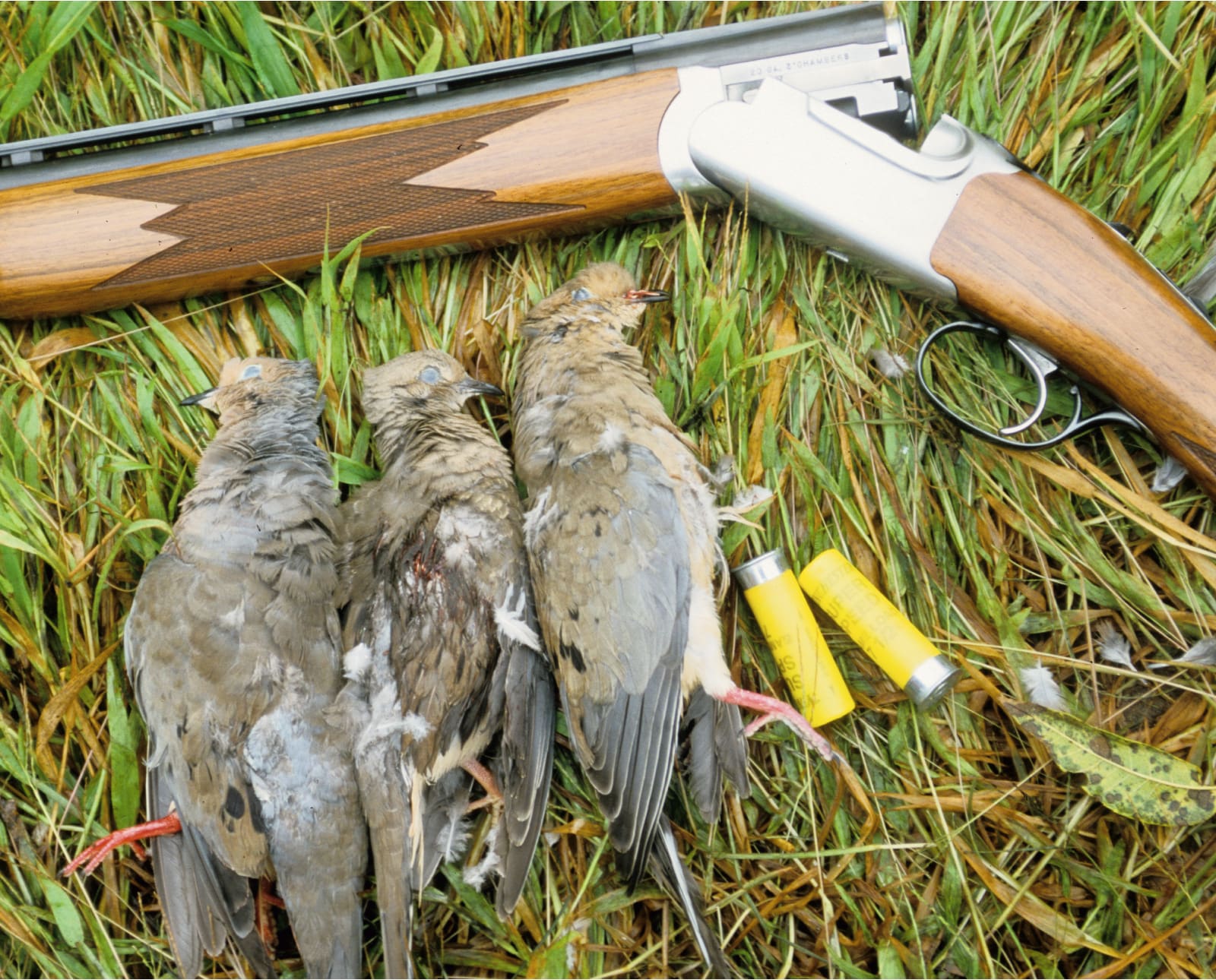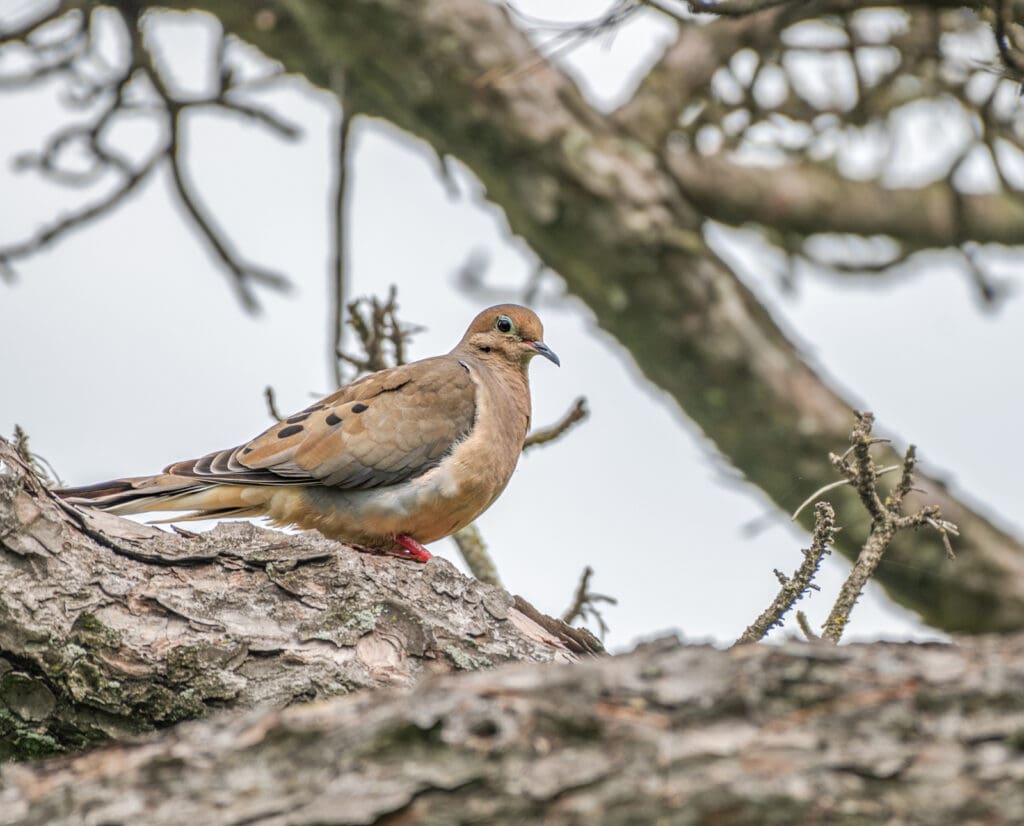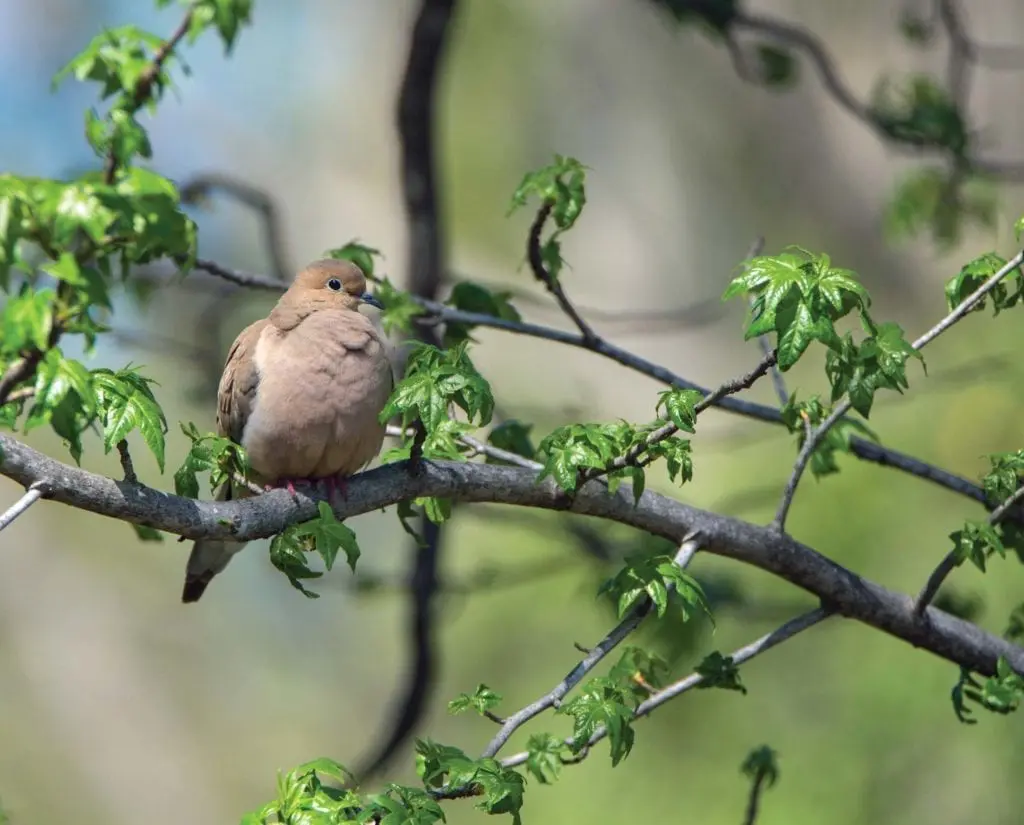Home » Dove Hunting » Early Season Dove Hunting Ideas
Early Season Dove Hunting Ideas

Frank Loncarich has been a wildlife biologist for over 20…
Raised in the upland bird mecca of Kansas, the passion…
Dove hunting can be the best option for good wingshooting in the early season.
I wiped the sweat from my brow as I crested another hill in western Nebraska in pursuit of sharptail grouse. Even though it was barely late morning, the mercury was already over 70 degrees. Whiskey, my orange and white Brittany, casted in front of me, but his pace had slowed considerably over the last hour. This was my second loop since dawn, and I had only managed to flush one small group of sharpies well out of range.
I knew the forecast predicted hot, dry conditions before I ever left my home state of Missouri, but I was intent on an early season outing in a landscape I found both fascinating and beautiful. As I lamented the lack of grouse sightings, I noticed a windmill near a water tank. It was the perfect place for Whiskey to get a much-needed drink.
As I approached the windmill, several mourning doves flushed from the bare dirt around the tank. Repeated visits from cattle had created a ring of dirt, with an outer ring of various weeds. My mind quickly switched from considering this a disappointing sharptail hunt to pondering the possibilities of a successful evening dove shoot.
Prairie grouse, Hungarian partridge, and ruffed grouse seasons typically open in September across those species’ ranges. Hunting these upland species during the early season can be a battle to beat the heat. Early morning hunts are often necessary to keep dogs from overheating when afternoon temperatures soar into the 80s and 90s. Some hunters choose to bide their time and wait for consistent cool weather, while others venture afield to maximize their season. Hunters who head out in warmer temperatures but wish to maximize their hours of wing shooting should keep doves in the back of their mind.
Mourning dove hunting is extremely popular across the United States. In fact, more doves are harvested every year than any other game bird. In most states, dove season opens in early September and lasts for two months or more, giving hunters ample opportunity to bag a few of the fast-flying gray rockets. The timing of the dove season overlaps nicely with several other species, including those mentioned previously.

Mourning Dove Hunting Strategies
There are two primary locations to shoot mourning doves: feeding areas or water sources. Doves nearly exclusively eat seeds and are readily attracted to agriculture fields where waste grain provides an easy meal. Wheat stubble, sunflower fields, and corn fields harvested early for silage are good places to scout. Doves seen loafing on nearby power lines or dead trees can offer insight into a nearby field that might be getting some dove use. Areas with an abundance of weed seeds like ragweed, pigweed, and wild marijuana, among others, can be hot spots for an evening hunt as well. Identifying the preferred flight path can take some time to discern, particularly on large fields. In many cases, a motion wing decoy can help attract doves into shooting range in these situations. Additionally, hunting large fields can be more successful with several hunters rather than alone when doves are landing throughout the field, rather than in a specific portion of the field.
Water sources provide a smaller area, making solo hunts much easier. Look for cattle ponds with bare soil surrounding the water’s edge or artificial features like windmills or stock tanks. Doves often get a drink after an evening feeding, prior to going to their roost site. Water source hunts can provide some fast action and often difficult shots.
Doves settling to land appear to be moving in slow motion, but their descent can create non-typical shot opportunities. Most upland game hunters are used to shooting flushing game, or birds that rise. Descending birds often cause hunters to miss high. On the contrary, waterfowl hunters are well accustomed to shooting birds settling down to land.
Water sources often have dove food in the form of weed seeds. Disturbance from cattle helps spur annual plants that create and abundance of seeds. Ragweed, foxtail, pigweed, and barnyard grass are all plant species that may be found near watering areas.

Integrating Doves into Your Early Upland Seasons
Because mourning doves are migratory, the United States Fish and Wildlife Service (USFWS) provides states with options concerning bag limits and season length. Many states have 75-day seasons, which results in dove season being open during upland seasons like pheasant and quail that occur later in the fall. Hunters pursuing quail, pheasant or other upland game may occasionally flush doves incidentally.
I’ve harvested many doves following my bird dogs on Missouri quail hunts. In fact, I’ve had many quail hunts where I only harvested one or two quail, but a few bonus doves added enough meat to provide the family a full meal rather than an appetizer. If you add a few bonus doves to your bag, here are some great dove recipes you can try.
Doves often flush from food plots or the edges of crop fields. Late season doves also like to loaf the tops of plum thickets or tree rows where the leaves have given way to fall and dropped from the branches. Look for doves flushing from the ground when working bird dogs through patches of ragweed or Korean lespedeza. Doves flushing from the ground can be much easier to hit with a load of pellets than the more common pass shooting that occurs at feed fields earlier in the season.
Keep in mind, if you don’t normally hunt doves, but hope to harvest a few while pursuing other birds, you need to possess a Harvest Information Program (HIP) number. The USFWS collects information on huntable migratory birds by requiring hunters to answer a few questions when they receive a HIP number. Some states charge a few bucks for the stamp and others provide it for free. Regardless, it’s required to hunt migratory birds.
Doves can challenge veteran shooters, provide extra hunting opportunities, and add a tasty treat to the dinner table. Whether you find yourself needing a break from the heat during the early season, or stumble into a few birds while chasing some other species, don’t forget about doves.
Frank Loncarich has been a wildlife biologist for over 20 years, specializing in bobwhite and grassland management. He is also a Habitat Consultant for Land and Legacy.
Raised in the upland bird mecca of Kansas, the passion for upland birds was born at a young age for Kyle Hedges. He has now spent over 25 years managing upland game habitat on public lands in Kansas and Missouri for State Conservation Agencies. He also works as a Habitat Consultant for Land and Legacy, assisting landowners across the country with improving their properties.




Just started getting project upland. Here on the east coast bird opportunities are not abundant. But if you are like me with a good dog. You can have a blast with doves . my wp griffon just loves. Thanks for the artical
love that. Ruger O/U is pictured. I have shot many a dove with my Ruger. I still have it and it still works…believe it or not it is the sporting clays version of the 12ga…love the 20ga also which my wife used for many years on dove shoots.